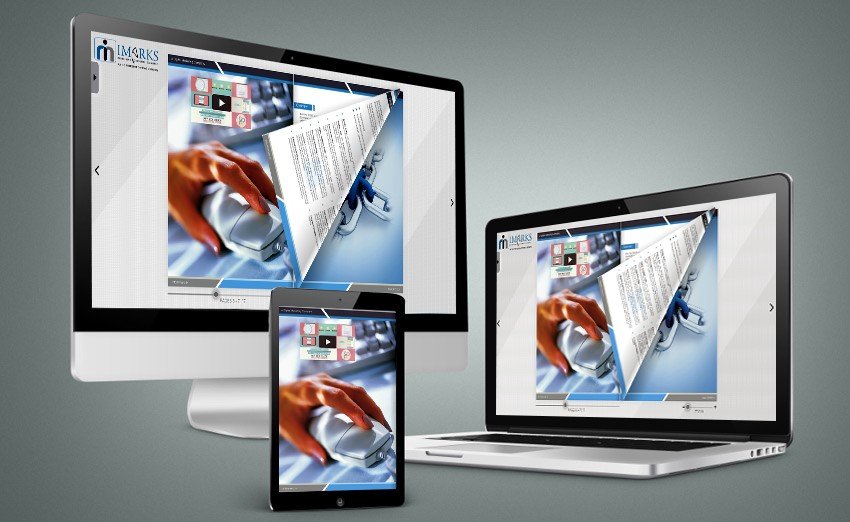No doubt, PDF flip book software, also known as page flip software, has revolutionized the way we create and interact with digital publications. From enriching the reading experience to offering versatile tools for businesses, this technology has become a must-have for anyone producing e-books, magazines, catalogs, or brochures. Whether you are a marketer looking to create stunning sales materials or a publisher aiming to move into the digital space, mastering the features of the software program is essential.
What is PDF Flip Book Software?
Simply put, this software program converts static PDF files into interactive, dynamic flip books. These resemble printed publications, with “page-flipping” animations that make reading on a screen feel more tactile and engaging. The goal? To take something as basic as a standard PDF and elevate it to a format that captures attention and encourages interaction.
The best flip book software allows businesses, educators, and content creators to enhance their material with multimedia integrations, hyperlinks, interactive elements, and design customizations. Whether you’re showcasing a product catalog or creating a digital magazine, flip books provide an engaging and modern experience for readers.
But not all flip book software is created equal. Look for these five must-have features to make sure you’re getting the most out of your platform.
- Ease of Use and Intuitive Interface
The learning curve shouldn’t leave you scratching your head. One of the most important features of PDF flip book software is its user-friendliness. Whether you’re a design novice or a seasoned professional, you should be able to upload and transform a PDF into a polished flip book with minimal effort.
Key aspects to look for:
- Drag-and-drop functionality to simplify the creation process.
- Pre-designed templates to help users quickly get started and create aesthetically appealing designs.
- Preview Mode to visualize your flip book before publishing it live.
For example, tools like PageTurnPro PDF flip book software pride themselves on their easy-to-navigate dashboards, where you can customize your flip book in just a few clicks. This ease of use makes the technology accessible even for teams without a dedicated graphic designer.
- Interactive Elements to Enhance User Engagement
Static PDFs don’t leave much room for creativity—but flip books do. One of the most powerful features of PDF flip book software is its ability to include dynamic, interactive elements. These features can enhance the reading experience and keep viewers engaged.
What can interactive flip books include?
- Embedded videos to amplify storytelling or showcase products.
- Clickable hyperlinks that direct users to additional resources, sales pages, or signup forms.
- Pop-up call-to-action buttons to convert casual readers into paying customers or loyal subscribers.
Imagine creating a sales catalog where readers can click on a product to watch an explainer video or go directly to your website to make a purchase. Interactive elements like these make flip books far more engaging than traditional PDFs, offering measurable ROI for businesses.
- Customizable Design Options
Your flip book should reflect your brand’s identity. That’s why robust design customization is a must when choosing PDF flip book software. From color palettes to layouts, the ability to tailor a flip book’s appearance makes all the difference.
Important customization features:
- Branding tools so you can add your company’s logo, colors, and fonts to align the flip book with your visual identity.
- Cover design options for creating a striking first impression.
- Custom backgrounds and themes to set the tone of the publication—whether it’s sleek and professional or playful and colorful.
With tools that deliver a high level of customization, users can create visually compelling publications that stand out. For businesses with strong branding demands, the ability to completely control the look and feel of the flip book is non-negotiable.
- Mobile Responsiveness
This one’s a dealbreaker. With more than half of internet traffic coming from mobile devices, your flip book software must be mobile-responsive. An unoptimized flip book that looks clunky or unreadable on phones or tablets can drive users away.
Features to look out for:
- Automatic mobile optimization so your flip book adapts seamlessly to any screen size.
- Responsive animations and features that don’t lag or break on smaller devices.
- Offline compatibility so readers can download and access the flipbook anytime.
Modern tools ensure publications are as functional on a smartphone as they are on a laptop. With mobile responsiveness built in, businesses can reach audiences no matter where or how they are browsing.
- Cloud Storage and Analytics
Once your flip book is created, you need a platform to publish, store, and analyze it efficiently. Robust cloud hosting and advanced analytics are indispensable features for tracking your flip book’s performance and managing your content outputs.
Top benefits include:
- Cloud storage that securely saves your flip books and gives you easy sharing options through URLs or embeds.
- Performance analytics that measure key metrics, such as page views, time spent on each page, and click-through rates.
Conclusion
PDF flip book software is about much more than a digital flip – it’s about creating immersive, memorable experiences for your audience. By focusing on these 5 key features, you can choose the right tool to elevate your content, maximize ROI, and take full advantage of what flip books have to offer.
Looking for a great tool to start building? Take a 15-day free trial of PageTurnPro PDF flip book software now. The future of digital publishing is just a click away!


